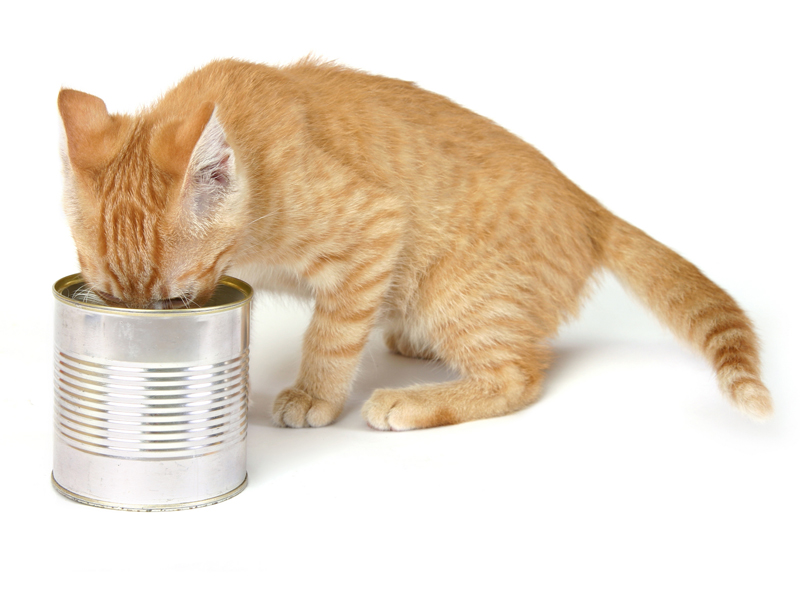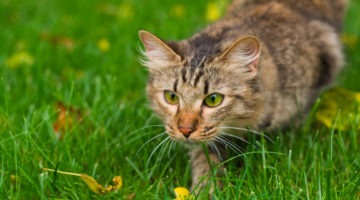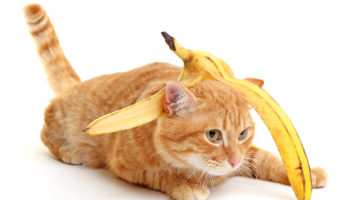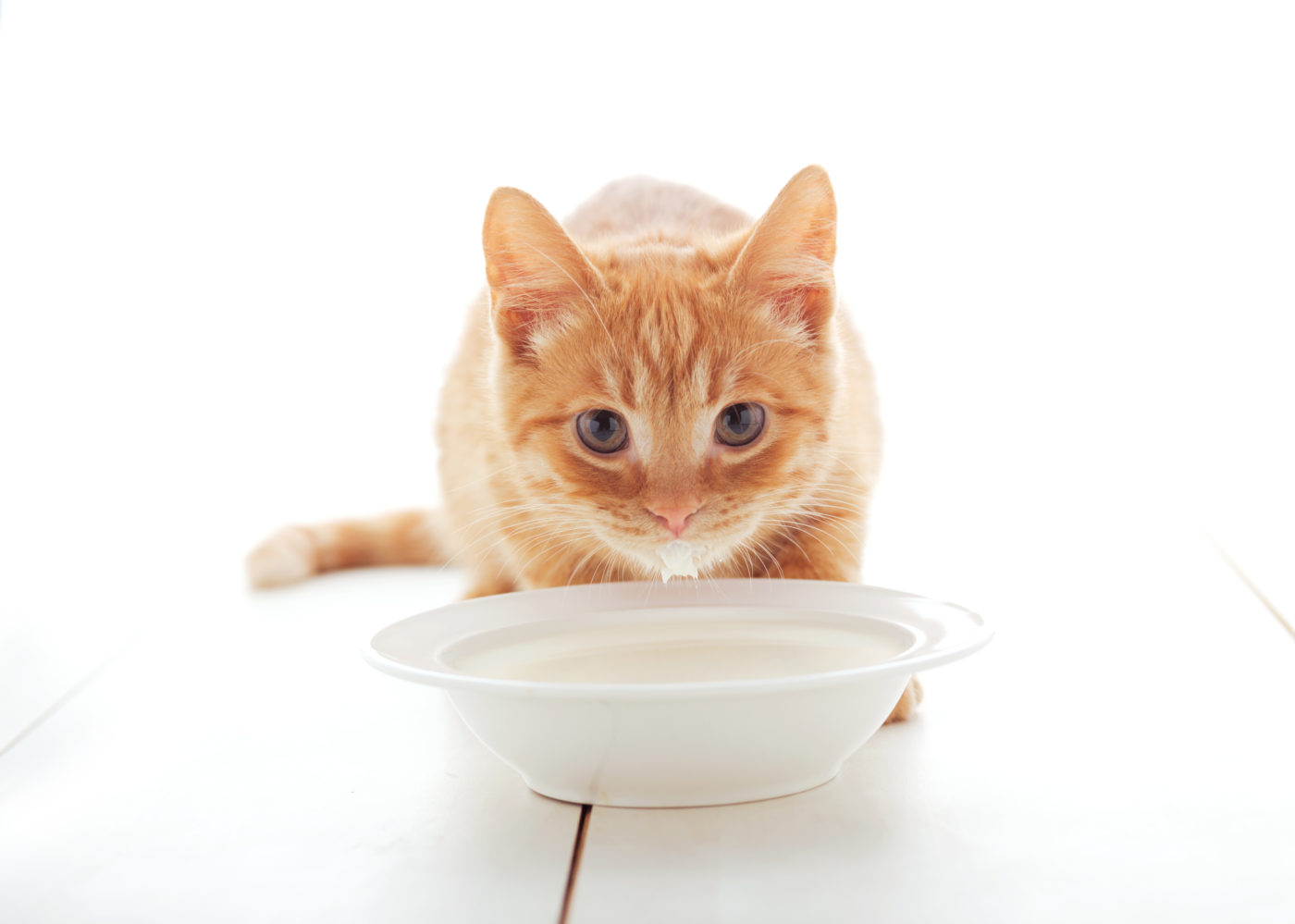Can’t make head or tail of the ingredient lists on pet food labels? Here’s how to decipher those puzzling terms – and make sure you’re buying a healthy product for your kitty.
Canned and dry cat food is convenient, but if you want the best nutrition for your feline, how do you know you’re getting a good quality product? The best way is to learn how to understand the ingredients on food labels. Trouble is, you may find the terminology more than a little confusing, if not downright indecipherable. Which ingredients are healthy, and which should you avoid?
Deciphering Definitions
Ingredient names are legally defined by the U.S. Food and Drug Administration (FDA) and the Association of American Food Control Officials (AAFCO). While not all states have adopted these definitions, pet food companies that ship across state lines must follow them.
The biggest distinction between animal ingredients is whether they are fresh (from slaughtered animals) or rendered (cooked to remove the fat and moisture). Fresh products are used mostly in canned foods, while rendered products are found in dry foods.
- Meat is a fresh product, made up of what we think of as muscle. The term “meat” is limited to just four species: cattle, sheep, goats and pigs. Choose a food that actually specifies the meat, like “beef” or “lamb.” If the label just says “meat”, it may contain a mixture of species.
- Meat by-products are basically “parts that aren’t meat”, such as lungs, spleens, kidneys, brains, livers, blood, bone and clean stomachs and intestines from freshly slaughtered animals. Some pet food companies specify the by-products they will accept, such as kidneys, livers and lungs. While cats would normally eat by-products as part of their prey, a diet based exclusively on by-products, with no real meat, is not appropriate.
- Meat meal is rendered. Unlike “meat”, bone may make up a considerable proportion of this ingredient.
- Meat and bone meal (MBM) is a convenient catch-all term for whatever offal and refuse happen to be rendered that day. This is where the worst stories about pet food come from. The appearance of MBM on a label means the food is poor quality.
- Poultry includes chicken, turkey, duck and other birds slaughtered for human consumption. It is a fresh product that includes muscle meat and skin. Unlike “meat”, poultry may include bone. The chicken used in pet foods is typically “backs and frames” (spines and ribs) left over from the processing of broiler chickens into breasts, legs, “boneless/skinless” cuts and wings for human consumption.
- Poultry meal is the rendered version of poultry.
- Poultry by-products include parts of slaughtered poultry carcasses such as heads, feet and viscera.
- Poultry by-product meal is the rendered version of poultry byproducts. It is very common in lower quality dry foods.
- Animal digest comes from the chemical and/or enzymatic breakdown of animal tissues – which could be practically anything. Animal digest comes in a liquid or powder form that is typically sprayed onto finished kibbles to add flavor.
- Corn gluten meal is the high-protein residue of processed corn, and is substituted for animal protein sources in cheap cat foods. Corn products are not what nature intended cats to eat, so it’s best to avoid them as well as wheat and soy products.
Choose a food that actually specifies the meat, like “beef” or “lamb.”
Is it really “complete and balanced”?
A cat food may be labeled as “complete and balanced” if it meets published standards in one of two ways:
- Nutrient profiles set the required amounts of protein, fat, vitamins, minerals and so forth. A manufacturer can formulate a food based on the amount of each nutrient in each ingredient, or chemically test the finished food. Many very good natural and organic pet food companies use this method, because they are too small to invest in feeding trials.
- Feeding tests require the food to be fed to at least six animals for six months. This used to be the better standard, but the rules have been diluted so that “similar” products can carry an identical label designation. There is no way of knowing if a particular food is the one that was actually tested, or if it’s a “distant relative” that wasn’t.
What’s the Guaranteed Analysis?
The Guaranteed Analysis tells you how much water and “crude” protein, fat and fiber are in the food. These amounts are arrived at by computer formulation or chemical testing, and are useful for comparing different foods. If you’re comparing canned to dry, however, you have to subtract the moisture percentage on the label from 100% to get the total “dry matter”. Then divide the ingredient in question by the dry matter to get the actual ingredient content. For example, a dry food with 10% moisture and 30% protein contains 33% protein (30/100-10), while a canned food containing 78% moisture and 10% protein actually contains 45% protein (10/100-78) on a dry matter basis.
Pet food labels are a rich source of information for those who know how to read them. While they don’t tell you everything about the food, they do provide guidelines for comparison shopping. Most importantly, they help you make sure you’re getting a high quality product that will keep your special feline companion in good health.
Corn products are not what nature intended cats to eat, so it’s best to avoid them as well as wheat and soy products.
A quality issue that has long slipped under the radar is the grade and source of the ingredient. For instance, “chicken meal” may be top grade and high quality, or it could be “bottom of the barrel”.
Additionally, many ingredients are coming from overseas, where the purity and cleanliness of facilities may not comply with U.S. rules. Unfortunately, these questions cannot be answered from reading the label, so a company’s good reputation really matters here.







No Comment